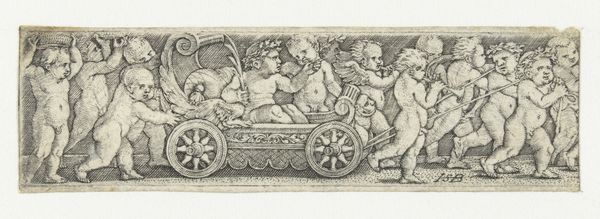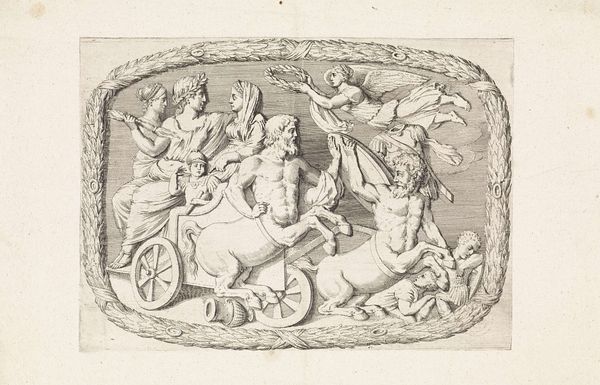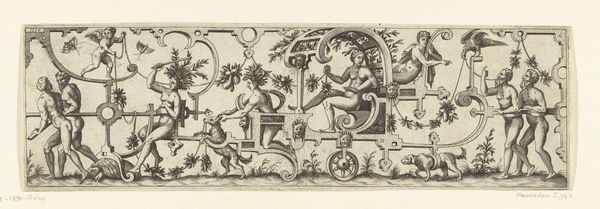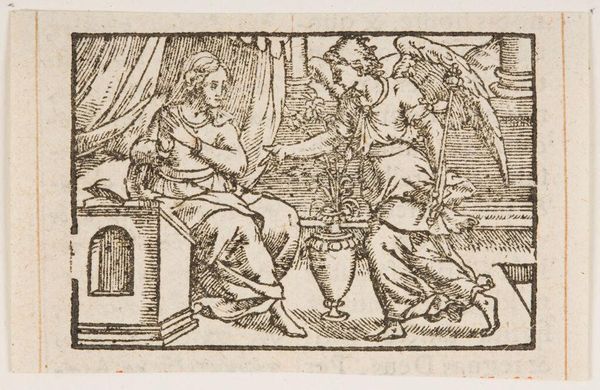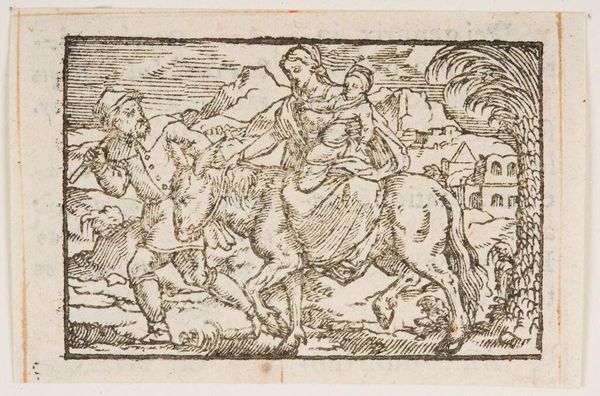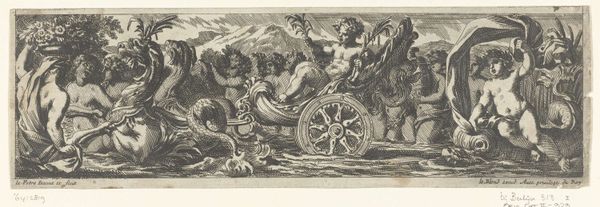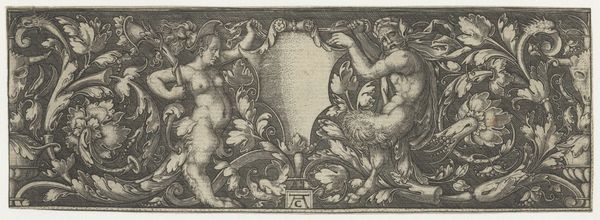
print, intaglio, engraving
#
pen drawing
# print
#
intaglio
#
figuration
#
11_renaissance
#
line
#
history-painting
#
engraving
Dimensions: height 20 mm, width 132 mm
Copyright: Rijks Museum: Open Domain
Editor: Here we have Monogrammist AC's "Triomfwagen," created sometime between 1520 and 1562. It's an intricate engraving. The eye is immediately drawn to this almost parade-like scene… quite fantastical and a little chaotic. What is your reading of this artwork? Curator: This print speaks volumes about the sociopolitical climate of the Renaissance. Images of triumph, drawing from Roman traditions, often functioned as vehicles for displaying power. Consider the composition; it’s not just about celebrating victory, but also about legitimizing it. Editor: Legitimizing it how? Curator: By showcasing not just military might, but also cultural sophistication and the 'divine right' to rule. Note how the figures are idealized, almost allegorical. How does this idealization speak to broader issues of identity and representation in that period? What about its cultural impact? Editor: So you're saying it's less about an actual event, and more about constructing an image of authority? The idealization is a form of propaganda? Curator: Precisely. Look closely at who is included, and who is conspicuously absent. The narratives being woven here uphold a certain social order. The classical allusions? It links their reign to this supposedly glorious past. Don’t you think the artist intentionally drew connections between Renaissance power and Roman authority? Editor: I hadn’t thought about it like that, but seeing it as a statement about power shifts my understanding entirely. I’m intrigued by how artists use history to frame contemporary issues. Curator: This piece highlights that the narratives constructed around events are never neutral; they are imbued with power dynamics and the deliberate shaping of identity.
Comments
No comments
Be the first to comment and join the conversation on the ultimate creative platform.
